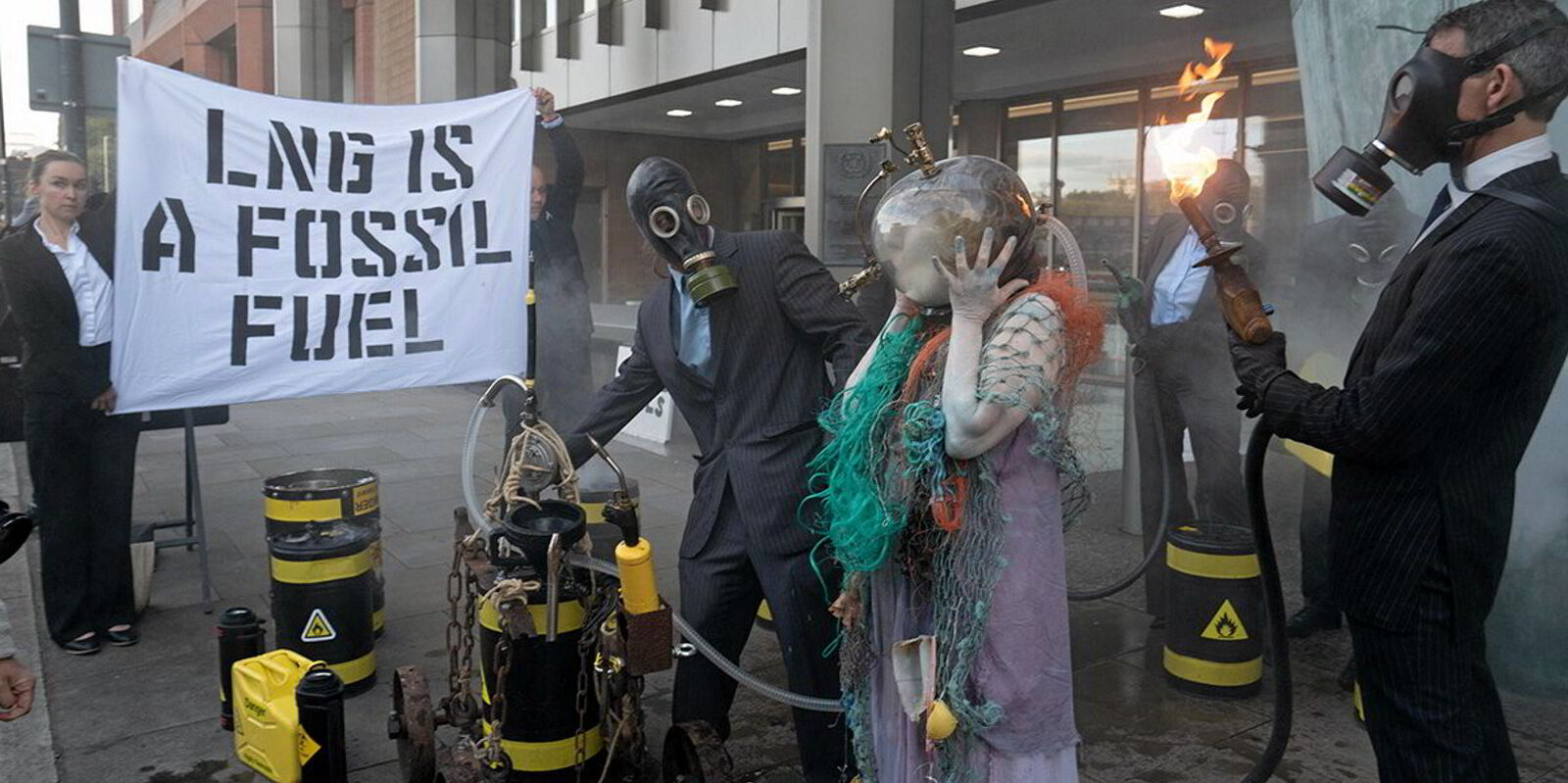Activists protesting against the use of fossil fuels staged some dramatic demonstrations outside the International Maritime Organization’s headquarters on Friday at the close of the 82nd meeting of its Marine Environment Protection Committee.
Members from Ocean Rebellion — which describes itself as “a grassroots international art collective who tackle Ocean degradation and biodiversity loss by conceiving playful, emotive and spectacular art interventions” — wore gas masks and lit flames, with one protester placing a fishbowl on her head and acting out an ocean goddess drowning in oil and LNG.
The group made several references to LNG industry lobby coalition SEA-LNG and named three of its members — AP Moller-Maersk, Royal Caribbean and MSC Mediterranean Shipping Company as promoting their ships as “green” when “LNG is not a green fuel”.
“By hiding behind reports on bio-LNG, SEA-LNG has been very successful in selling LNG as a green fuel, even though bio-LNG is expensive and rare, meaning fossil LNG is the gas of choice and still causes methane emissions throughout its supply chain and use,” the group said.
Ocean Rebellion said it is demanding that IMO member states “recognise that LNG is a fossil fuel that negatively impacts people, the environment, and the climate at every stage of its life cycle and to stop listening to SEA-LNG lobbyists”.
The group also wants all companies involved in the promotions of LNG to be scrutinised to establish if this is a breach of their environmental sustainability goals.
It also called for: “The IMO to promote efficiency and the use of sail and electrically powered vessels by incentivising uptake in the shipping sector, empowering and upskilling workers and introducing fairer shipping routes.”
The protest came in a week when a US academic study claimed that the effect of LNG on the world’s climate is worse than that of coal.
In a study published by the journal Energy Science & Engineering, Cornell University scientist Robert Howarth looked at the greenhouse gas footprint of LNG produced in and exported from the US.
Howarth concluded that “the greenhouse gas footprint for LNG as a fuel source is 33% greater than that for coal” in terms of its 20-year global warming potential.
He said that “even considered on the time frame of 100 years after emission… which severely understates the climatic damage of methane, the LNG footprint equals or exceeds that of coal”.





